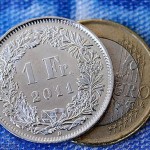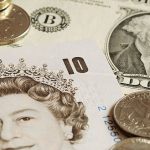 Gold fell for the fifth consecutive day to trade near the lowest in more than 4 years amid expectations the Federal Reserve is considering raising lending costs sooner than projected. The metal is likely to drop even further as the U.S. dollar strengthened and technical analysis points towards taking bearish positions.
Gold fell for the fifth consecutive day to trade near the lowest in more than 4 years amid expectations the Federal Reserve is considering raising lending costs sooner than projected. The metal is likely to drop even further as the U.S. dollar strengthened and technical analysis points towards taking bearish positions.
Comex gold for delivery in December traded at $1 164.3 per troy ounce at 8:22 GMT, down 0.47% on the day, having earlier dropped to $1 163.4. The precious metal fell 2.25% on Friday and closed at $1 171.6, having reached a new four-year low of $1 160.5 during the day.
A key technical support level of about $1 180 was broken on Friday, turning into a resistance level, and kept pushing the price down. December Gold contracts reached highs of $1 173.4 per troy once on Monday and $1 168.5 on Tuesday. The downfall came after Bank of Japan expanded its stimulus program, further increasing the strength of the dollar.
“While the metal closes below this level, the technical risk grows for a liquidation move below $1 155,” ScotiaMocatta analysts said in a note. “Only a close back above $1 200 would shift our view from bearish to neutral.”
Meanwhile the U.S. dollar reached a new four-year high on Monday after the Federal Reserve ended last week its monthly bond purchases and informed that an increase in interest rates may come sooner that expected as the labor market improves at faster pace and prices continue to stabilize.
Fed officials announced that if their targets of full employment and stable prices are met faster than expected, they would increase interest rates sooner. However borrowing costs remain low for now and will stay that way for a “considerable time”, the Federal Open Market Committee said.
The US dollar index, which measures the greenback’s performance against a basket of six major trading peers, slowed down from the previous four-day gains. The December contract fell by 0.09% to 87.325 by 8:26 GMT on Tuesday. The U.S. currency gauge gained 0.45% on Monday to 87.407 and overtook its four-year high of 86.870 reached on October 3rd, having hit 87.540.
The Commerce Department’s Bureau of Economic Analysis is expected to report at 13:30 GMT that the US trade deficit probably narrowed slightly to $40.00 billion in September from $40.10 billion in August. If confirmed, this would be the lowest reading since January.
Later in the day, the US Census Bureau will report on the nation’s factory orders for September. This indicator measures the change in the total value of new purchase orders placed with manufacturers.
Orders are projected to have declined by 0.6% in September on a monthly basis, compared to a 10.1% contraction in August. Excluding the sector of transportation, orders probably have risen by 0.1%.
In case new orders dropped more than anticipated, this would have a bearish effect on the greenback, and vice versa.
The announcements follow the Bureaus early statement of U.S. GDP growth for the third quarter. The agency reported on Thursday 0.5% better results from the expected 3%, but down from Q2 GDP of 4.6%.
Assets in the SPDR Gold Trust, the biggest bullion-backed ETP and a proxy for investor sentiment towards gold, gained 10 kilograms on Monday from the 741.20 tons on Friday, which was the lowest since October 2008.
Pivot Points
According to Binary Tribune’s daily analysis, December gold’s central pivot point on the Comex stands $1 168.1. If the contract breaks its first resistance level at $1 175.1, next barrier will be at $1 180.5. In case the second key resistance is broken, the precious metal may attempt to advance to $1 187.5.
If the contract manages to breach the S1 level at $1 162.7, it will next see support at $1 155.7. With this second key support broken, movement to the downside may extend to $1 150.3.





